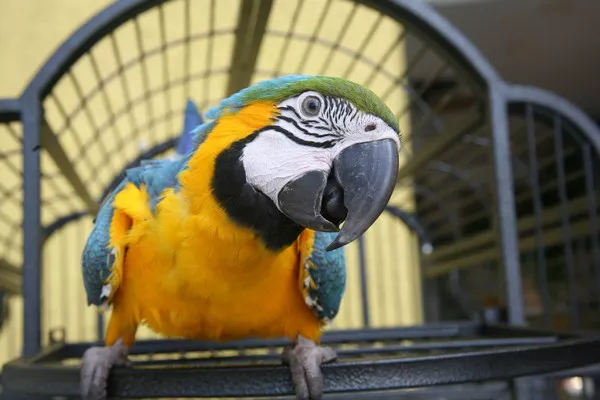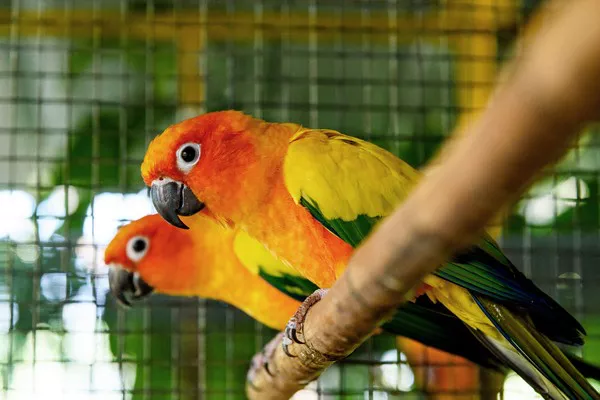Foxhounds are among the most well-known and highly respected breeds in the world of hounds. They have been bred for centuries to track and hunt game, and their remarkable scenting abilities and tireless energy make them perfect companions for hunters. Among the many variations of foxhounds, the two most recognized breeds are the American Foxhound and the English Foxhound. Though they share many similarities, these two breeds also possess distinctive characteristics that set them apart from one another.
In this article, we will explore the differences between the American and English Foxhounds in terms of history, physical traits, temperament, exercise needs, and suitability as pets. By the end of this guide, you will have a clear understanding of how each breed excels and what type of family or lifestyle is best suited to either breed.
1. Historical Background
American Foxhound: A Legacy of Independence
The American Foxhound traces its origins back to the early colonial days of the United States. This breed was developed in the 18th century, specifically to cater to the hunting needs of early American settlers. Early American hunters sought a dog that could cover large areas, endure the rigors of long hunts, and track down foxes and other game over vast distances. To create the perfect hound, breeders crossed various European hounds, including the English Foxhound, French Hounds, and even the Irish Wolfhound.
The American Foxhound’s reputation as a skilled and resilient hunting dog quickly spread, and it became a favorite among American hunters, especially in the South. This breed is known for its endurance and ability to cover long distances without tiring, making it ideal for tracking and pursuing foxes across open landscapes.
English Foxhound: A Tradition of Excellence
The English Foxhound has a history that predates its American counterpart. Its roots lie in England, where it was bred to chase foxes for hunting purposes. The breed’s origins date back to the 16th century, and the English Foxhound was initially developed by aristocratic hunters. The breed was selectively bred to combine stamina, speed, and strength, enabling the dogs to keep pace with fast-moving foxes across varied terrain.
English Foxhounds are most often associated with fox hunting in packs, and they have been used for centuries by English huntsmen. The dogs were carefully bred in packs, and their teamwork and close coordination are considered key to their hunting success. This breed was typically used for “hound packs,” where multiple dogs would work together to hunt and corner a fox.
2. Physical Characteristics
Although both breeds share the “hound” classification, they exhibit a few differences in terms of physical traits. These traits can affect how each breed performs in a hunting environment and how they fit into family life.
Size
American Foxhound: The American Foxhound is generally lighter and more refined than the English Foxhound. Males typically stand between 22 and 25 inches at the shoulder, with females being slightly smaller at 21 to 24 inches. The breed’s weight generally ranges from 40 to 65 pounds, depending on the individual.
English Foxhound: The English Foxhound is larger and more robust. Males can stand 24 to 27 inches tall at the shoulder, and females usually range between 23 to 25 inches. Their weight is also more substantial, typically ranging from 60 to 75 pounds.
Coat and Color
Both breeds have a short, dense coat that helps protect them in harsh weather conditions, but their coats have slight differences.
American Foxhound: The coat of the American Foxhound is smooth and fine, with a glossy finish. This breed commonly comes in a tri-color pattern, with a combination of white, black, and tan. However, they can also come in various colors, such as lemon (light tan) or solid colors. Their coats shed moderately throughout the year, though they require minimal grooming.
English Foxhound: The coat of the English Foxhound is slightly coarser and thicker than that of the American Foxhound. It’s typically smooth, medium-length, and well-suited for outdoor activities in cooler climates. The English Foxhound’s coat also comes in a tri-color pattern, with white, black, and tan being the most common combination. They may also appear in bi-color or other color patterns.
Build and Movement
American Foxhound: The American Foxhound has a leaner, more athletic build, which contributes to its excellent speed and endurance. Its long legs and light frame allow it to cover ground swiftly during hunts. The breed’s movement is fluid and effortless, with a loping stride that is well-suited for endurance.
English Foxhound: The English Foxhound has a more muscular, stocky build. While still built for endurance, it has a bit more bulk, which enables it to handle rougher terrain and more challenging conditions. Its movement is powerful and steady, with a gait that reflects its strength.
3. Temperament and Personality
Both the American and English Foxhounds are friendly, loyal, and affectionate, but they each have distinct personalities that might make one breed a better fit for certain households over the other.
American Foxhound: Independent and Easygoing
The American Foxhound is generally an independent and free-spirited dog. As a breed originally developed for long hunting excursions, American Foxhounds are known for their strong sense of independence. They are less prone to forming deep bonds with one person and are more likely to enjoy the company of a variety of people. While they can be affectionate, they tend to be more self-reliant than many other breeds.
Despite their independent nature, American Foxhounds are generally good-natured, gentle, and social. They are usually friendly toward other dogs and pets and can be a good fit for homes with other animals. Their easygoing demeanor also makes them relatively low-maintenance in terms of training and handling.
English Foxhound: Gentle but Strong-Willed
The English Foxhound, while similarly friendly and affectionate, tends to be a bit more serious and focused due to its background in structured hunts. They are known for their strong pack mentality, as they were bred to work in groups. English Foxhounds tend to bond closely with their human families but may be less independently inclined than their American cousins.
One distinguishing feature of the English Foxhound is its strong prey drive. As a result, it can be more challenging to train, particularly around small animals or in environments with tempting scents. However, with the right training and socialization, they can be excellent family pets, especially in households that can provide them with ample exercise.
4. Exercise Needs and Care
Both American and English Foxhounds are active and energetic dogs that require plenty of exercise to remain healthy and happy. However, their needs differ slightly due to their distinct histories and physical characteristics.
American Foxhound: Energetic and Endurance-Focused
The American Foxhound is a breed built for endurance. Originally bred to hunt foxes over long distances, American Foxhounds require plenty of space to run and explore. They thrive in active households where they can engage in outdoor activities like hiking, running, or playing fetch. Due to their energy levels, they may become bored or destructive if not given enough mental and physical stimulation.
Because of their relatively low-maintenance coat, American Foxhounds require only occasional grooming to keep their coats clean and healthy. Their activity levels and intelligence make them highly trainable, although they can occasionally display stubbornness. Early socialization and positive reinforcement training work best for this breed.
English Foxhound: A Need for Regular Activity
English Foxhounds, though similar to the American Foxhound in their need for exercise, may have slightly higher demands when it comes to physical activity. With their larger size and more muscular frame, English Foxhounds need regular, intensive exercise to maintain their health. Long daily walks, runs, or jogs are a must. English Foxhounds also excel in dog sports and activities that involve teamwork and coordination, such as agility or obedience.
Though they are not as hyperactive as some other breeds, English Foxhounds are still very energetic and enjoy being outdoors. Their thick, water-resistant coats do require more grooming than those of their American counterparts, especially during shedding seasons.
5. Training and Socialization
Both breeds require early socialization and consistent training. Due to their strong prey drive and independent natures, they can be challenging for first-time dog owners, especially when it comes to recall and managing their energy. Training should focus on positive reinforcement, patience, and structure to help them thrive in a home setting.
American Foxhound Training Tips
Positive reinforcement: Reward-based training works best with this breed.
Consistency: Like all hounds, the American Foxhound responds well to clear, consistent commands.
Mental stimulation: Because of their intelligence, American Foxhounds need challenges to keep their minds engaged.
English Foxhound Training Tips
Firm leadership: Due to their stronger prey drive, English Foxhounds need an owner who can be firm and consistent.
Socialization: Start socializing your English Foxhound at a young age to ensure they are comfortable around other animals and people.
Physical activity: Include plenty of physical activity in their routine to keep them content and well-behaved.
6. Which One Is Right for You?
Choosing between an American Foxhound and an English Foxhound depends on your living situation, energy levels, and what kind of pet experience you’re looking for.
American Foxhounds are ideal for active individuals or families with a lot of space, especially those who want a dog with endurance. They can adapt to apartment living if given sufficient exercise, though they perform best in larger homes or homes with access to a yard.
English Foxhounds are great for families who can offer regular physical activity and mental stimulation. They may be better suited to those with experience in handling large dogs or hounds due to their stronger prey drive and slightly more stubborn nature.
Conclusion
While both American and English Foxhounds are remarkable dogs with similar origins, they exhibit distinct differences in size, temperament, and exercise needs. The American Foxhound’s independent nature and athletic build make it a versatile companion for active households, while the English Foxhound’s team-oriented mentality and slightly larger frame make it a great choice for those who can meet its exercise and training needs. Understanding these differences will help you make an informed decision about which breed is right for your home, lifestyle, and family dynamic.
Related Topics:



















